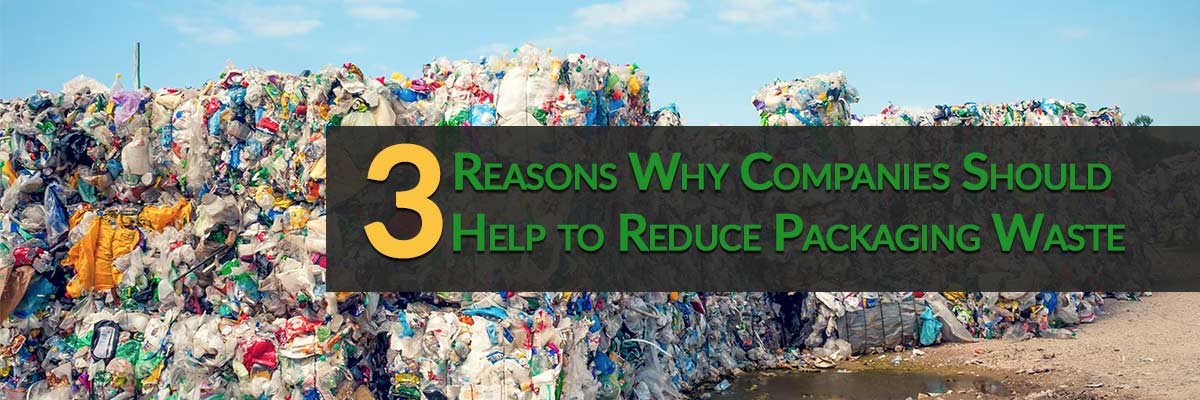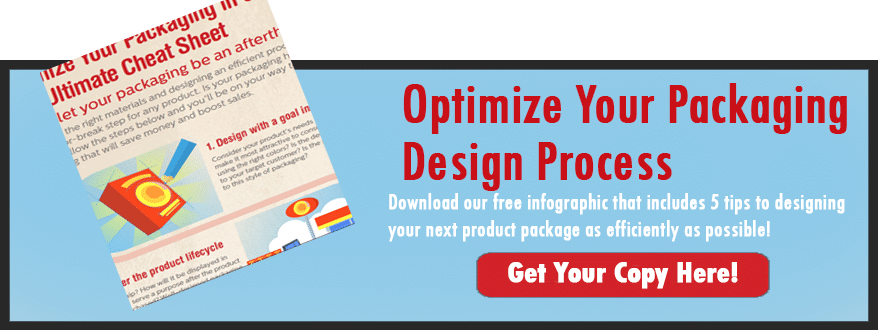3 Reasons Companies Should Help to Reduce Packaging Waste
Packaging Materials | Environment | The Business of Packaging | Packaging Design | Food Packaging
There’s no escaping the images and videos depicting plastic bottles and waste floating along nature’s waterways and oceans, nor the devastating predictions about pollution’s increasing impact on the demise of our environment. As inhabitants of this great planet, we play a monumental role in effecting positive environmental change. We have a responsibility to ourselves (and humanity at large) to adopt effective ways of reducing waste and caring for Mother Earth. So, too, do the companies and large corporations developing, manufacturing, packaging and transporting the goods and materials that leave an ecological footprint.
There is certainly a plethora of simple opportunities for all of us to reduce our personal consumption of packaging and maximize sustainability efforts on a daily basis. Likewise, there are important steps that companies can take to minimize their footprint and practice a real commitment to preserving the environment. The good news is that prioritizing these steps helps organizations reap valuable advantages, in more ways than one. For many companies, perhaps no objective is more urgent and relevant in this matter than that of reducing packaging waste.
Industrialization has had a severe impact on our environment over many years. Let’s examine how company efforts to minimize the use and waste of packaging can result in positive outcomes for everyone. Here are three critical reasons why your organization should be taking action to curtail packaging waste.
Get Your Free Packaging Design Optimization Cheat Sheet
Uncover 5 actionable tips to start optimizing your packaging designs for efficiency and sustainability!
Reason #1: There Are Cost Savings to Be Had
The initiatives your company takes to reduce packaging waste benefits more than just the environment. These “green” practices also boost the “green” in your bank account. By auditing and evaluating your packaging line and process to eliminate materials waste, as well as assessing and optimizing the types of materials you utilize, you can achieve significant savings. Just think: Could increasing the grade of the polyethylene shrink wrap used to bundle your products eliminate the need for a cardboard tray? Making small tweaks and adjustments like these can help you save in a big way. Here are some other opportunities for cost efficiency:
- Negotiate Your Roll Cost: Talk with your packaging provider to see if there are ways to get a better price per roll for your shrink film needs. Buy in larger quantities to get a bulk discount and save on shipping costs or delivery fees.
- Adjust Your Film Width: PVC shrink film and other shrink wrap films are available in all sorts of sizes. If you’re packaging at high volumes, reducing your film width from, say, 12 inches to 11 inches would save you 4.2% in materials cost alone.
- Minimize Cut-Off: Film cut-off is the amount of film you take off the roll for each package. If you can reduce this length from 11 inches to 10 inches, for example, you will save 9.1% in material costs.
- Reduce Your Film Gauge: New technologies go as far as achieving the same integrity of 100, 75, 60 and 45 gauges at only 38 gauge.
- Run a Film Audit: Send a product type through your packaging line, doing 100 runs as a test, and check the number of rejects based on different criteria for failure0 (e.g., poor shrink, broken cross-seal, broken end-seal, burnout from too much heat, etc.). Perform a specific equipment assessment with the goal of finding your weak areas so you can fix them.
- Try Different Formulations: A different formulation may reduce your re-wraps. There could be more than one kind of shrink wrap film that works for a particular product.
There are also more environmentally friendly packaging material options that can help decrease your operating costs. Flexible film can be tailored to the specific size of your product, meaning there’s no need to use more materials than absolutely necessary. By conforming to your goods and rendering a higher product-to-package ratio, flexible packaging makes it more affordable to ship items domestically and internationally. Plus, flexible packaging film requires less energy to manufacture and transport, and it generates smaller quantities of greenhouse gases on its way to market.
Reason #2: The Future of the Environment Depends on It
Waste from packaging is one of the biggest causes of today’s environmental issues, including problems like global warming, contaminated bodies of water and landfill accumulation.
Did you know that plastic can take up to 1,000 years to degrade in a landfill? And humans throw away (instead of recycling) enough plastic each year to wrap around the world four times. Even worse, 80% of companies don’t recycle and “don’t care,” which contributes to tons of waste produced each year.
These are serious problems with serious ramifications. They require major attention from all of us, both personally and in the larger business arena. You can reduce your own plastic consumption with small, easy choices like opting for reusable shopping bags, using refillable water bottles, investing in reusable To-Go Ware and declining the use of straws at restaurants and bars. And as a company, it’s essential to make the choice to recycle. This minor change to how the organization processes waste can make an enormous difference in solving big environmental issues. Consider tactics like:
- Making it easy and fun for your staff to recycle by holding a competition between departments
- Encouraging staff to recycle at home and outside of the office
- Providing reusable lunch bags branded for your business to help eliminate waste and increase brand awareness at the same time
In your packaging process, think about how you can leverage materials that are recyclable and/or reusable. From flexible films to dual-purpose designs, there’s much you can do to develop more environmentally sound product packaging that does its part to preserve the future of our planet.
Don’t completely disregard plastics as the better alternative however. If your product is shelf-life sensitive, flexible plastics may be the more environmentally friendly option than paper or glass. When it comes to weight and freight and the emissions released from creation of the alternatives, flexible plastics are lighter and less harmful while being extremely protective. It’s all about reducing the amount of packaging required for the finished good, thinner gauge films and smaller, lighter packages for less fuel consumption during shipment.
Reason #3: Sustainability is Sexy
Let’s face it: The general public is vastly more aware of environmental issues than ever before. By stepping up and making a difference in the sustainability space, you open up valuable opportunities for luring market share from eco-focused consumers, gaining brand recognition and cultivating customer loyalty.
Once you’ve made authentic and successful efforts to reduce packaging waste and prioritize sustainability, let consumers know. As the time approaches to order new materials, transform your packaging and overall brand to increase awareness about these changes. (Of course, trashing old packaging just to boast a new “we’re sustainable” message is not so sustainably-minded, so just wait until your next order.)
Take a cue from major brands like Pepsi, which has stepped up to make changes that have reduced 20% of the waste generated by its non-carbonated beverage bottles. This is a prime example of one company making a simple change that has a large impact on both sustainability outcomes and brand appeal.
So, what’s the big takeaway here? Now’s the time to start making a difference and incorporating small changes that reduce packaging waste and support real environmental conservancy. Schedule a meeting with your internal team today to begin thinking about business-beneficial green initiatives. Keep track of your changes and the impact they have on both the environment and your bottom line, and share these successes to reiterate the tangible value in reducing plastic packaging waste.
Interested in finding how to get started with optimizing your packaging design process? Take the first step by accessing our free packaging efficiency cheat sheet.
About David Roberge
I am grateful to be part of the outstanding Industrial Packaging team. I am able to hang out with some of the most knowledgeable folks in the packaging industry. I feel even luckier that I am able to share that knowledge with you. I love learning, hiking, and growing people and teams both personally and professionally, and helping companies grow better.




